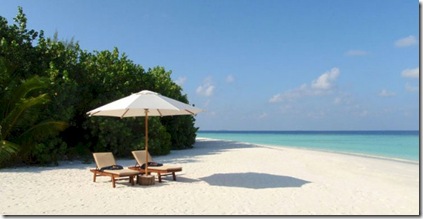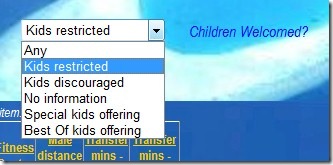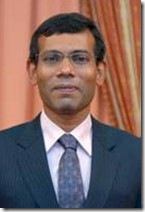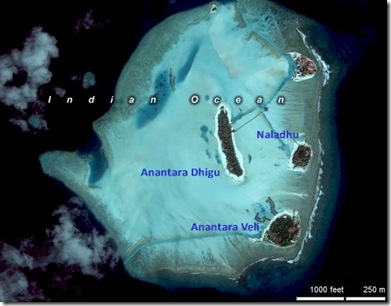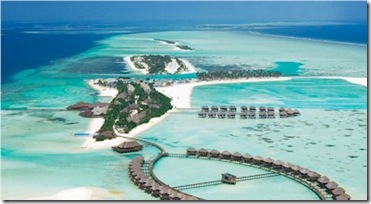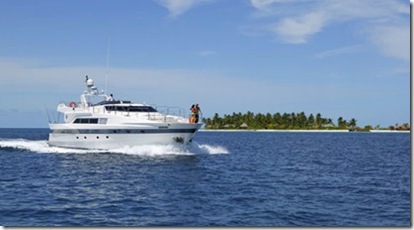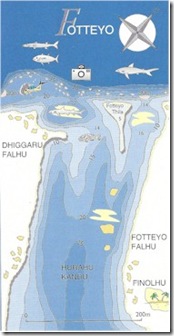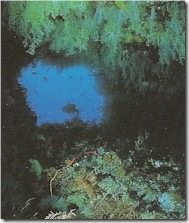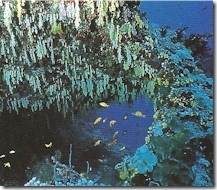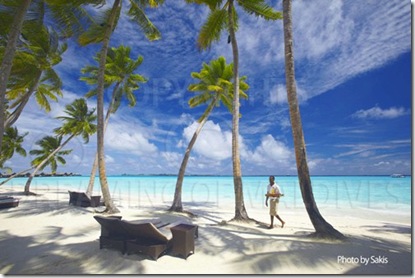Using the new ‘Children Welcome’ filter to the ‘Resort Finder’ page allows people to dial up their child friendliness from ‘kids play free’ right down to ‘kid free’. As it turns out, the Maldives resorts vary in their embrace of children as widely as public sentiment. Some have invested in elaborate ‘kids clubs’ like Sheraton Full Moon and Conrad Maldives Rangali, both of which I have post on. Others like Baros, Meeru, Komandoo and W Retreat also have restrictions. But the most restrictive child policy is Dhoni Island which does not allow anyone under 16. So if you are one of those put off by peals of laughter and splashing about, then Dhoni Island is the best of the Maldives for you.
Maldives for Families – Profile/Filtering Enhancement
As I mentioned way back at the outset of Maldives Complete, I had originally thought that I might build a website called ‘Maldives for Families’ out of the conviction that this destination was so superbly suited for adults and children alike. Little did I know that online, especially at Trip Advisor, there is a massive debate between this school of thought and the view that the Maldives is no place for children. So of the ‘anti-children’ views try to argue based on patronising forced logic (eg. long-haul flights not suitable for children who are going to kick seats and cry, loud and obnoxious children will spoil my idyllic holiday that I paid thousands for, specialised medical treatment is not immediately at hand). I always speak out in support of children being welcome, but in the end I appreciate ‘to each his own’.
To support people finding just the right resort for them, I’ve added a field to the Maldives Complete database which delineates the resorts into one of 5 categories about how ‘Child Friendly’ they are…
- Children restricted
- Children discouraged
- No information
- Children special facilities
- ‘Best Of’ child offerings
So you can filter in the Resort Finder on ‘Children Welcome’ I have also added a note box to the resort Profile which provides additional detail about the restrictions, facilities and ‘Best Of’ offerings. Finally, for further reference. Trip Advisor also has a handy FAQ on the topic.
Best of the Maldives: Eco Conference – Soneva Fushi
While the focus of the Hay Festival Maldives event being sponsored by Soneva Fushi features a range of ecological issues, Soneva Fushi has gone one further by hosting an Eco Symposium ‘climate change debate’ featuring a range of premier environmental keynote speakers. One of the speakers is none other than the high profile Maldive President Mohamed Nasheed. It also includes Solar Century Founder Jeremy Leggett (with whom I shared the speaking stage a few years ago at the 2007 Tech Track Awards), and Mark Lynas author of ‘Six Degrees: Our Future on A Hotter Planet’ (which coincidentally I just read last week…scary stuff). Quite a first class line-up.
- “The Six Senses Eco Symposium at Soneva Fushi in the Maldives from 7-10 October 2010 will have an exciting line up of guest speakers including leading consultants, environmentalists, international policy makers and visionaries…The Symposium’s opening speakers will be President of the Maldives Mohamed Nasheed and his advisor on climate change, Mark Lynas. President Nasheed has made worldwide headlines with his country’s commitment to carbon neutrality by 2020. Mark Lynas’ bestselling book “Six Degrees: Our future on a hotter planet” won the prestigious Royal Society Prize for Science Books in 2007 and was turned into a documentary by National Geographic.Practical examples of eco technology will be showcased at the Symposium to inspire the travel and tourism leaders attending. Clean energy specialists such as Lounette Dyer of Soledo Energy, Jeremy Leggett of Solarcentury, Eric Scotto of Akuo Energy Group and Dr. Anthony Michaels of Proteus Environmental Technologies will explain how existing technology can both reduce the carbon footprint of hotels and resorts and increase profitability, the holy grail for the industry.”
Best of the Maldives: Literary Event – Soneva Gili
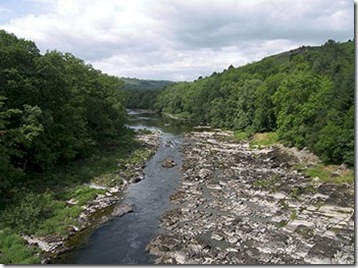
(The Wye River in Gloucestershire…like the Maldives an idyllic spot for some outdoor water activity as well as a literary festival)
Also winner of the small world connection is Soneva Gili’s sponsorship of the ‘Hay Festival Maldives’. The Hay Festival started as a small literary event in the English idyllic village of Hay-on-Wye. The ‘on-Wye’ bit of course being the Wye River which happens to be our family’s annual canoeing destination courtesy of friend, former colleague and master canoeist Gareth Hall. I was at first surprised to read a connection between this rather esoteric and remote Gloucestershire event and the Maldivian top flight resort, but I guess the Hay Festival has grown into a truly international phenomenon with satellite events around the world…
“Soneva Gili is delighted to announce its sponsorship of the inaugural Maldivian offshoot of the internationally renowned Hay-on-Wye literary festival which is taking place in the Maldives from the 14th to 17th October 2010. The Hay Festival Maldives will celebrate 2,000 years of Maldivian island culture and provide a platform for focusing international attention on the challenges faced by the archipelago due to climate change, bringing together international and local artists from the fields of literature, art, science, music, poetry and comedy.”
Best of the Maldives: Closest Neighbours – Dhigu / Veli / Naladhu
While Olhuveli and Fun Island might be a football pitch apart, if you want a little neighbourhood of tiny companion islands, then the Anantara resorts – Dhigu, Veli – and Naladhu. Each resort is just under 300 yards apart. So if you are apprehensive about being too remote and isolated, then maybe this little cluster in the Lakshadweep Sea is for you.
Best of the Maldives: Closest Neighbour – Olhuveli / Fun Island
The person who first introduced me to the Maldives is former colleague in Microsoft, Andy Lees. I still remember him recounting how he simply waded over to a neighbouring island on one of his visits. In one of my first blogs, I set out to find the closest island to wade to and highlighted Rihiveli Beach. But the shallow lagoon doesn’t make it the closest companion island. That honour goes to the Olhuveli and Fun Island resorts that are just over 100 yards apart (though separated by deeper water than Rihiveli’s wade which is about 400 yards away).
Best of the Maldives: Yachting – The Rania Experience
A number of the most upscale resorts offer some nice boats for day excursions or more. When we stayed at the Conrad Maldives Rangali Island several years ago, we had a delightful sunrise cruise on the wooden ship Goma that they kept there. Several have dhonis including obviously Dhoni Island where water villas are inspired by dhonis.
But if you are keen on your very own flash motor yacht, then The Rania Experience is the place for you. It’s very tag line is “One island, one yacht, one million possibilities.”
The web site describes…
“The RANIA yacht, a majesty 86-foot Gulf Craft luxury speed cruiser is at the guest’s disposal daily for 3 hours and any additional hour rental is at a minimal rental fee of US$ 2,000 per hour.”
Methinks that Rania also might just score the ‘Best Of’ superlative of the Maldives’ ‘Most Expensive Excursion.’
Best of the Maldives: Dive Site – Alimatha
Maldives is one of the world’s leading diving destinations right up there with the Red Sea, Great Barrier Reef, Caymans, and Belize. But which is the top resort for diving among this top destination. Certainly a subject for much debate and hair-splitting. Picking out out a premier site over the 90,000 square kilometres of atolls would be a bit of a tall order.
TripAdvisor Forums have also discussed this topic and offer a range of other nominations with a particular fondness for the South Ari atoll. But the most prominent consensus pick appears to be ‘Fotteyo Kandu’ in the Felidhoo Atoll. Tim Godfrey’s book on the Maldives, ‘Dive Maldives’, describes in his full page review of the site (page 115) which includes the pictures featured here…
- “An excellent dive regarded by many divers as the best site in the Maldives. It is a photographers’ paradise and a mecca for marine biologists. This is a dive with many possibilities.”
The dive travel site appropriately named ‘Maldives Dive Travel’ also anoints it #1in its own top 5 list with this compelling description…
- “Many scuba divers consider Fotteyo Kandu to be the best Maldives dive site and it is also rated among the top 5 dive sites in the world. The mouth of the channel is exposed to the ocean and during north east monsoon when the currents are incoming, a good variety of fish species gather at the entrance to the channel. Animals commonly spotted at Fotteyo Kandu include Gray Reef Shark patrolling the channel mouth, Jack and Tuna in the deeper water, schools of Midnight Snappers and Red Snapper form in huge groups. The wall features caves, overhangs and swim-throughs at different depths. These caves and overhangs are filled with colourful yellow color like soft coral, deeper caves and overhangs are filled with huge bushes of black corals. The Thila in the middle of the channel entrance is the best place to do the safety stop. A surface balloon is a must at Fotteyo Kandu.”
Two resorts are in the Felidhoo atoll for those seeking out Fotteyo, Dhiggiri and Alimatha, but Alimatha gets the nod because it about 4 kilometres closer to the site.
Best of Maldives: Most Remote – Shangri-La Villingili
(photo reprinted with permission)
Today’s superlative comes to us again courtesy of Maldives photographer extraordinaire Sakis Papadopoulos whose Dreaming of Maldives site shares tidbits often as colourful as his snaps. Last week, I caught this superlative on his Twitter feed wishing a ‘Happy Birthday’ to Shangri-La Villingili which happens to be shared with Maldives itself (26th July).
He also noted Shangri-La Villingili’s distinction as the ‘Furthermost Resort of the Maldives’. Actually, if you used the Maldives Compete Resort Finder, you too could have uncovered this as it would stand out with a list topping 550 kilometres from Male.
Best of the Maldives: Room Variety – Kurumba
Most resorts have a handful of choices for types of rooms. Most typically, they will have a couple versions of a beach bungalow (standard and deluxe) and increasingly a majority of resorts have a water bungalow option (61 of the 121 resorts in the Maldives Complete database). Sometimes they will add a special ‘suite’ which will be a specially designed, king-sized accommodation for VIPs and thick-walleted customers.
But if you like your room choices the way you like your doubleshot-decaf-dry-skinny-mocha-latte, the Kurumba is the rate card for you. They have 8 different room categories…
- Royal Kurumba Residence
- Presidential Suite
- Pool Villa
- Garden Villa
- Private Villa
- Deluxe Bungalow
- Deluxe Room
- Superior Room
And these are just land-based lodging variations as Kurumba does even not offer water bungalows.
Kuramathi list 9 on its rate card, but 4 of these are just one type with a Jacuzzi added, and not completely really a different styles.

